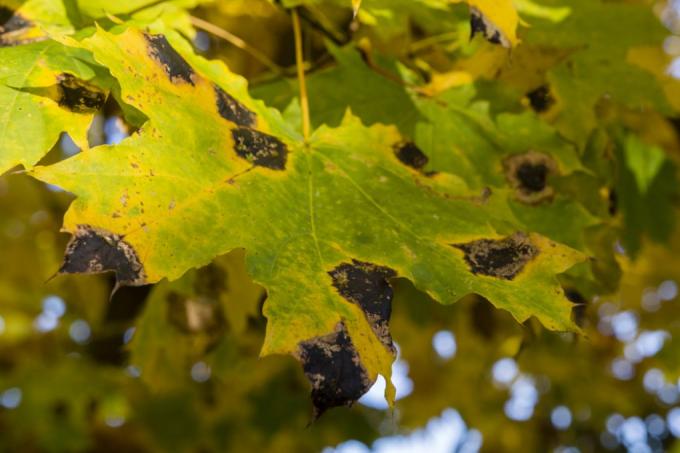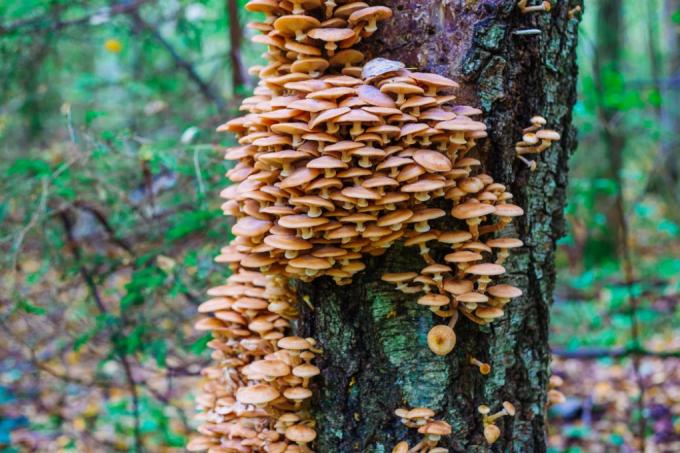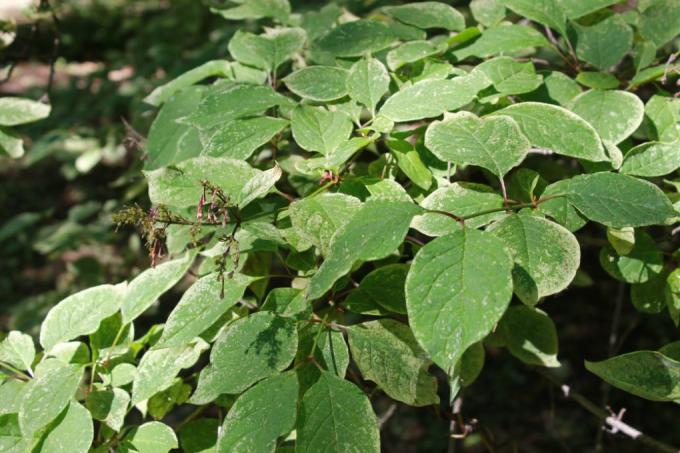AT A GLANCE
What are the signs of fungal attack on spruce and what can be done about it?
Fungal infestation in spruce is manifested by honey fungus infections, red rot and Sirococcus shoot dieback. Signs include root damage, resin flow, and bent shoot tips and needle loss. As a countermeasure, the affected tree should be felled early and affected roots treated to protect neighboring spruces.
Which fungal diseases can occur in spruce?
It is true that fungal attack on spruce is observed much less frequently than damage by insects; yet there is several fungal pathogens and diseases, which can occur with the conifer and are worth mentioning:
- Honey fungus infection (due to different honey fungus species)
- Red rot (especially due to root fungus and bleeding layer fungus)
- Sirococcus dieback (by Sirococcus conigenus)
also read
How does a honey fungus infection manifest itself?
The species of the fungal genus Honey fungus feed mainly saprophytically on dead wood parts in the soil. However, they can also switch to a parasitic lifestyle if the potential host plant is already damaged. As
Root and stem rot pathogen Honey fungus can cause standing spruce trees to die off.Identifying features:
- Dark brown to black mycelium strands (rhizomorphs) mixed under the finer roots of the spruce tree, with a rather rounded cross-section
- whitish flat, fan-like branched network under the dead bark above the base of the trunk (can also become black and encrusted after the tree dies)
- Resin flow in the lower trunk area
How do you recognize red rot?
Various types of fungi can cause red rot in spruce. The most important causative agent is the root fungus (Heterobasidion annosum). He causes one root rot, which leads to an ascending white rot in the heartwood and endangers felled spruce, especially in early autumn.
In addition to root-forming stem rot are also wound rotting to mention. These penetrate the trunk via bark injuries. A typical cause of such a fungal attack on spruce is the Bleeding layer fungus (Stereum sanguinolentum).
What characterizes the Sirococcus dieback?
For the Sirococcus shoot dieback in spruce, the Sirococcus conigenus responsible. This mushroom typically affects the youngest shoots. If the latter curl up and lose their needles, you can assume a fungal infection. At the tips of the shoots there is often a bunch of browned ones spruce needles to hang as a "flag"; these needles were not fully formed at the time of infection.
In the case of a perennial infestation, the Crown getting thinner. It thins out from the outside in. Chronic infestation leads to the death of the affected spruce.
What can be done against fungal infestation in spruce?
Unfortunately, once a fungal attack has occurred, there is not much that can be done about it. The tree should be felled early, as it is increasingly losing stability due to the fungal disease and is becoming more susceptible to wind.
Important: In order to protect neighboring spruce trees from infestation, the root trunk should be felled tree treated with an agent that renders the fungus harmless. The goal is a fungal attack to prevent. This works best when the spruce is at its Location has everything it needs for healthy growth and life.
Tip
Rust fungus: unsightly, but not threatening
Unlike the fungal diseases described above, rust fungi are not a serious threat to spruce. They can infest the coniferous tree, but then "only" make for a somewhat unattractive appearance, as they turn the needles yellowish and blemish them with whitish spores.








